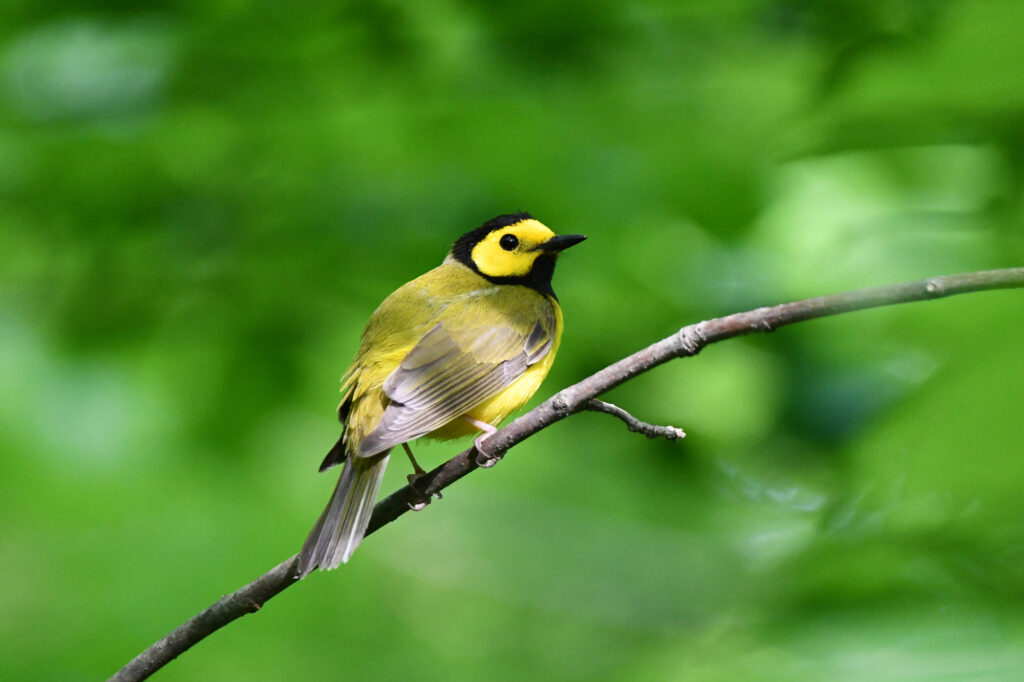st Virginia isn’t just known for its rolling hills and beautiful mountains; you can find over 354 different bird species in the Mountain State!
This post lists some of the most exciting and colorful birds to look for in West Virginia. We’ve also added information about their measurements and where you can find them.
Let’s get started!
25 Birds to Spot in West Virginia
Most of the birds we’re about to highlight can be found in your backyard, but we’ve also included some rare birds for those looking for a challenge.
Red Birds in West Virginia
Northern Cardinal
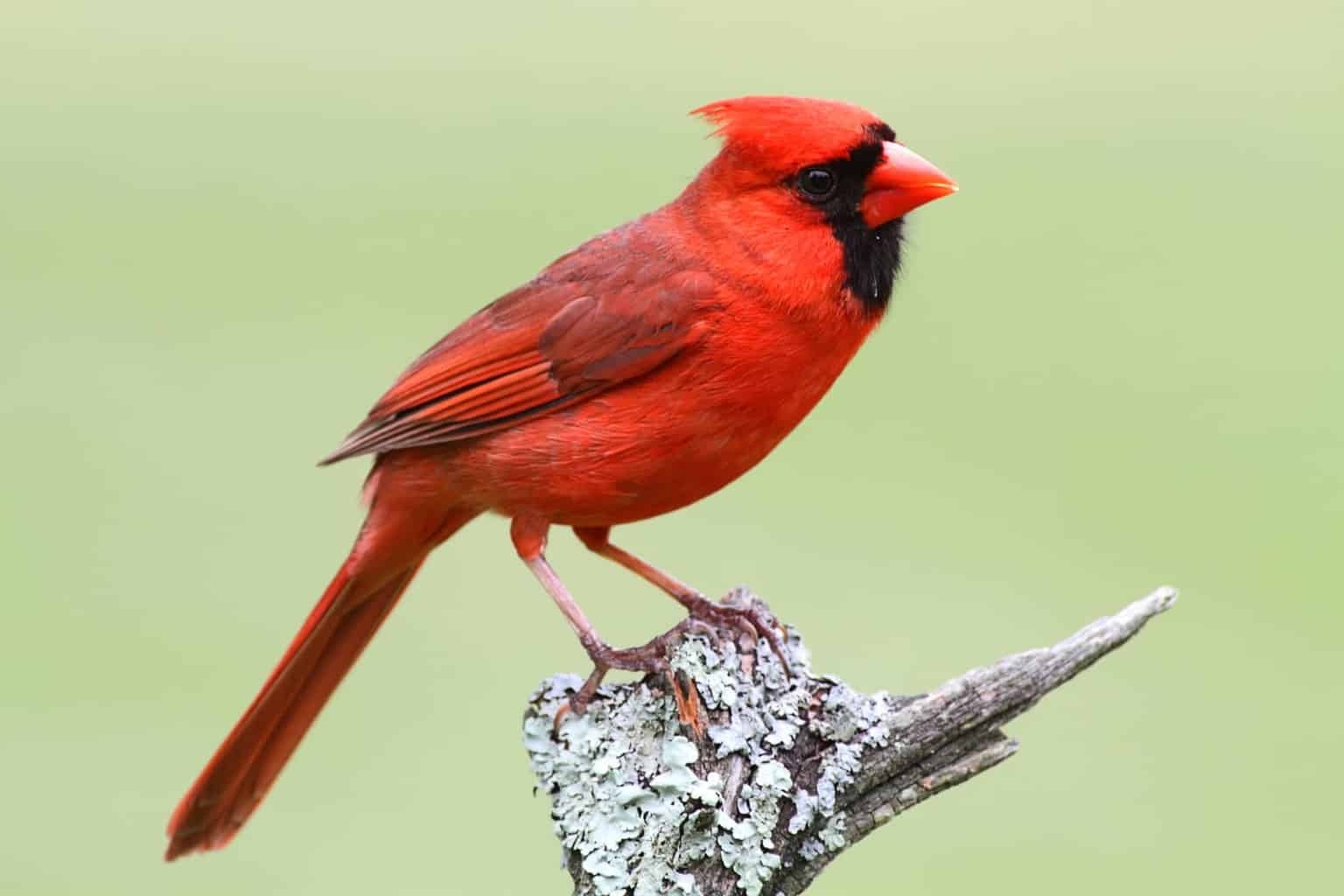
- Scientific Name: Cardinalis cardinalis
- Length: 8.3 to 9.1 inches
- Weight: 1.5 to 1.7 ounces
- Wingspan: 9.8 to 12.2 inches
The Northern cardinal is West Virginia’s state bird. This shouldn’t come as a surprise since Northern cardinals are the official bird of at least seven eastern states.
These birds are extremely common in West Virginia. They nest in thickets, woodlands, and gardens throughout the state. You can also find them in city parks or swamps.
The male Northern cardinal is extremely territorial. He will attack anyone who comes near his nest. It’s fairly common for birdwatchers to spot a male fighting his own reflection in mirrors or windows!
Their diet is made up of berries, seeds, and insects. Their favorite foods are beetles and caterpillars, although they feed on pretty much all types of insects.
Pine Grosbeak
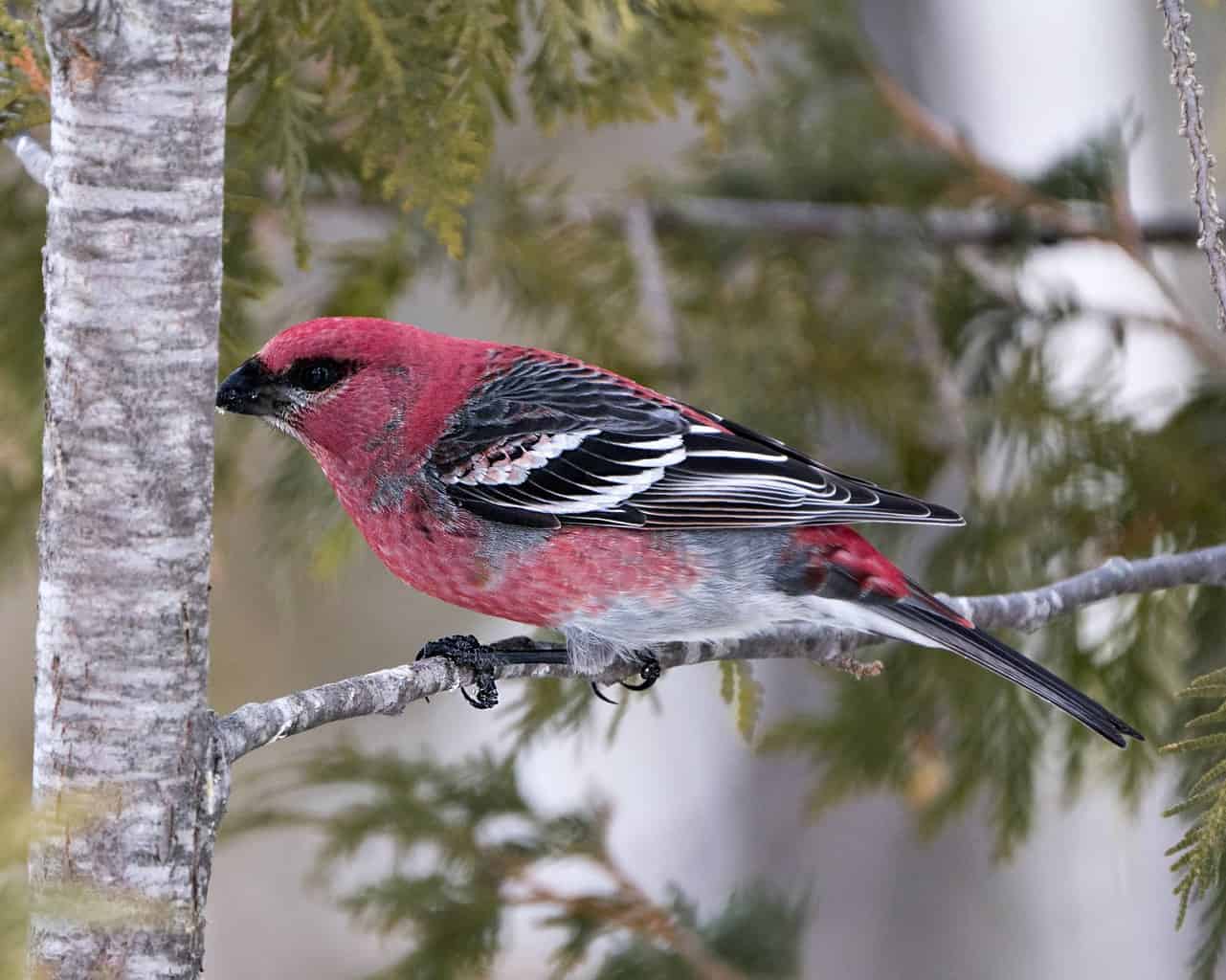
- Scientific Name: Pinicola enucleator
- Length: 7.9 to 10 inches
- Weight: 1.8 to 2.8 ounces
- Wingspan: 13 inches
Pine grosbeaks were first spotted in West Virginia in 1934; a woman found one on her porch feeding on fruits from apple and maple trees. Since then, Pine grosbeaks have been uncommon yet widespread in West Virginia.
These birds like spruce forests and mountains. Ironically, Pine grosbeaks are often not found in pines. They especially like fruiting trees and other conifers.
If you happen to see a Pine grosbeak, you can approach one without it flying away. These birds are extremely tame and usually allow humans to get near them.
Their diet is usually fruits, buds, and seeds. They forage in flocks and move from tree to tree rather slowly. They’re picky eaters, and their diet is mostly vegetables, although they can also indulge in a few insects.
Common Redpoll
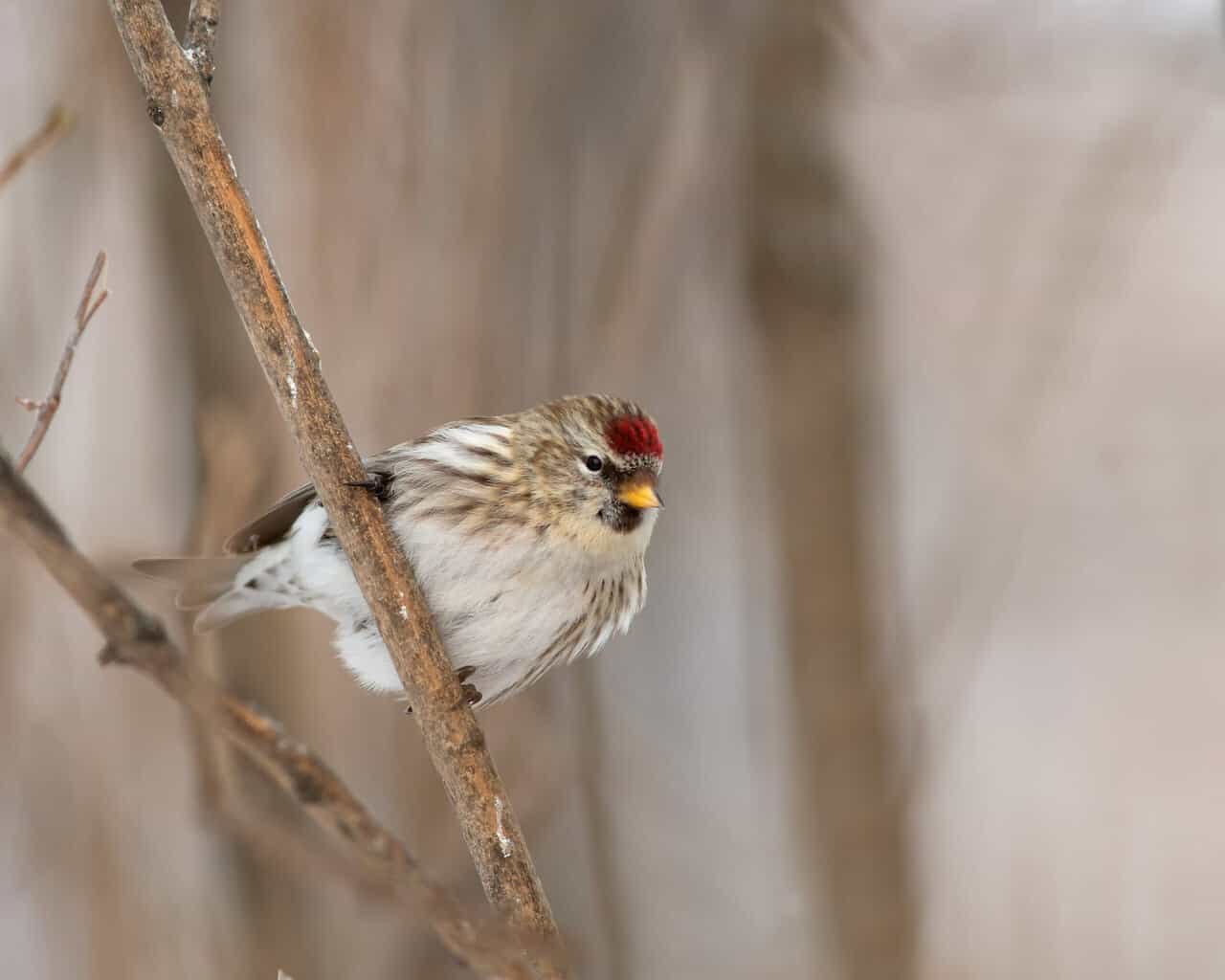
- Scientific Name: Acanthis flammea
- Length: 4.7 to 5.5 inches
- Weight: 0.4 to 0.7 ounces
- Wingspan: 7.5 to 8.7 inches
Common redpolls have a distinctive red patch on their chest, upper flanks, and forehead. They have a yellow bill with some black plumage.
If you see a Common redpoll, you probably won’t find it by itself. Redpolls travel in huge flocks and are almost always on the move. You can find up to several hundred redpolls flying together.
Redpolls are small, but they have an extraordinary ability to survive harsh winters. You can find them in thickets, weeds, and birches. They also reside in spruce forests and woodland edges.
Their diet mostly consists of seeds. They also sometimes eat insects. They have a pouch where they can store food for hours, which helps them survive the bitter winters.
Redpolls aren’t aggressive and won’t defend their nesting territory. What’s interesting about this species is that males dominate the females except during breeding season. When it’s time to nest, females take the lead and become the dominant ones.
Red Crossbill
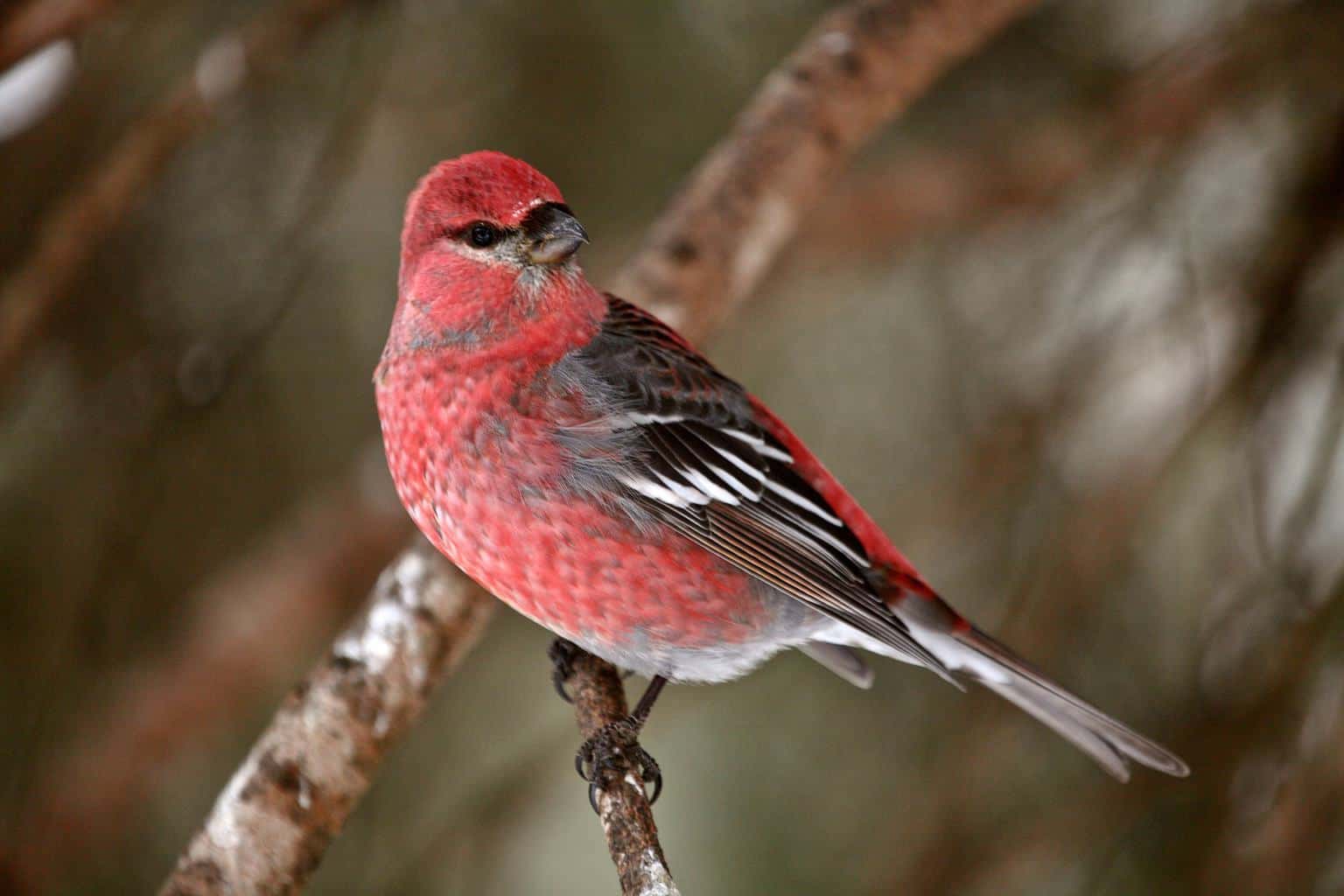
- Scientific Name: Loxia curvirostra
- Length: 5.5 to 6.5 inches
- Weight: 1.1 to 1.5 ounces
- Wingspan: 10.5 inches
Red crossbills have an eye-catching brick-red plumage. Females tend to have a brownish shade with yellow underparts. Both have dark wings and tails.
Red crossbills are widespread across conifer, spruce, and pine forests. They’ll rarely leave the evergreens. Some subspecies may prefer to breed in certain types of forests, and they’re usually localized in these areas for most of their lifetime.
These birds take equal roles in nesting and parenting. The females care for the young while the male brings her and the chicks food.
Their diet consists mainly of conifer and pine seeds, though they can eat insects now and then. Interestingly, Red crossbills are extremely attracted to salt.
Scarlet Tanager
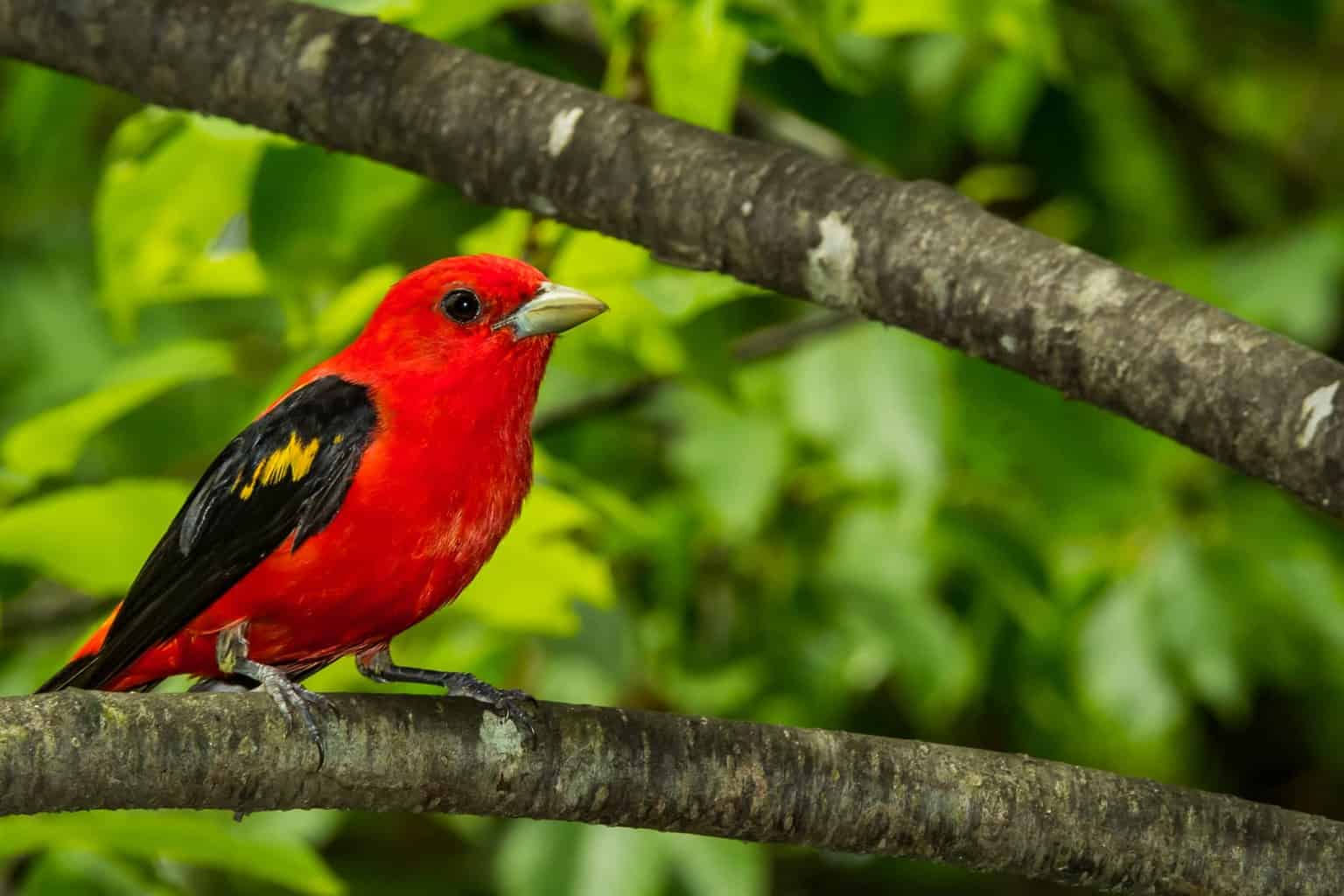
- Scientific Name: Piranga olivacea
- Length: 6.5 to 7.5 inches
- Weight: 0.83 to 1.34 ounces
- Wingspan: 11.5 inches
Scarlet tanagers look distinctive because their bright colors contrast beautifully with the dull woodlands. You can find them in the oak trees of deciduous forests. They also reside in beech, maple, and sometimes pine trees.
These birds love insects. In fact, insects constitute most of their diet in the summer. They catch their prey mid-air, so insects like moths, bees, wasps, and beetles are preferred.
It isn’t known what they eat in the winter, but birdwatchers say they shift between berries and other wild fruits.
Their nest is built on trees by the females, while the males either bring food or do nothing during nestings.
Blue Birds in West Virginia
Indigo Bunting
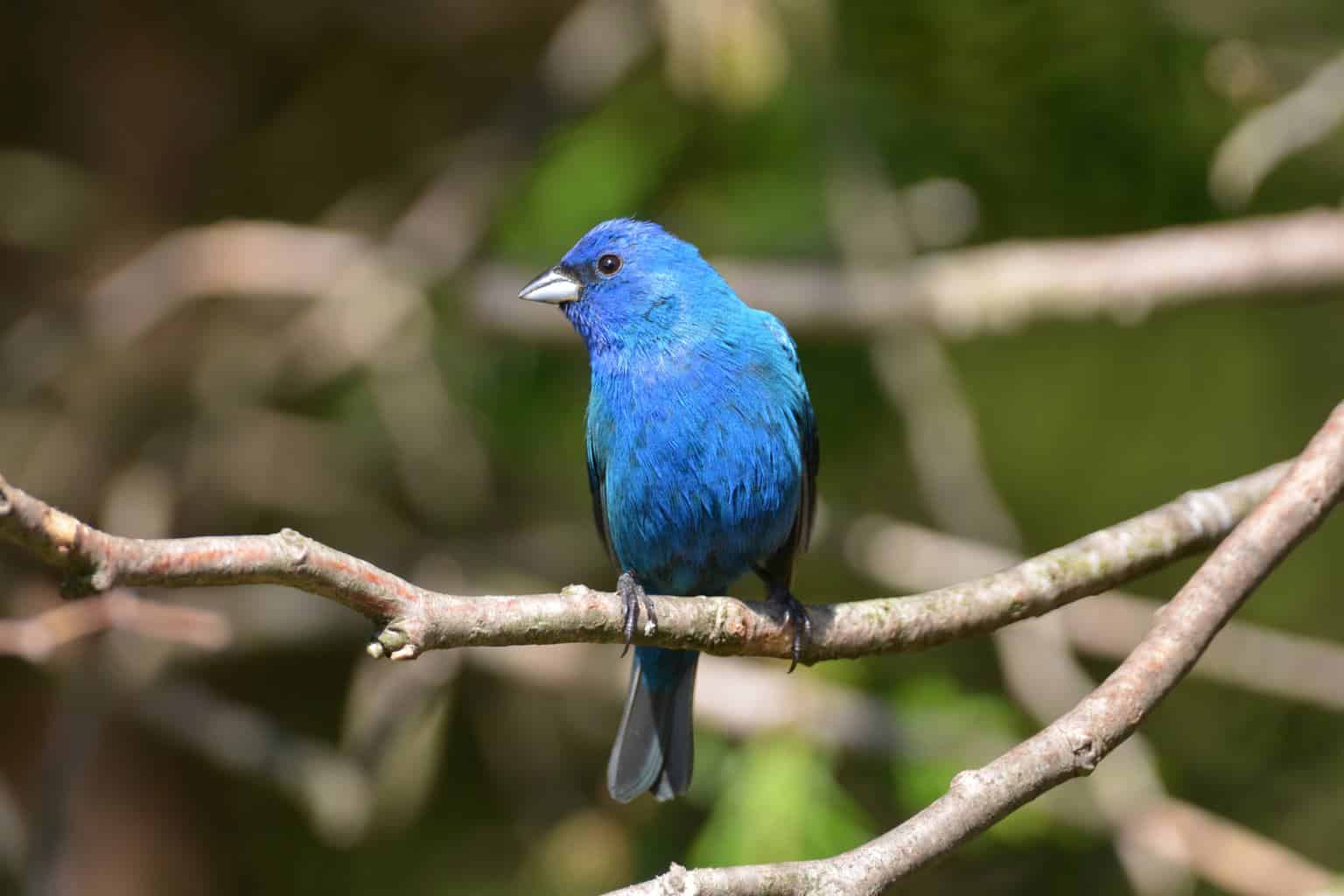
- Scientific Name: Passerina cyanea
- Length: 4.5 to 5.9 inches
- Weight: 0.4 to 0.75 ounces
- Wingspan: 7.1 to 9.1 inches
Male Indigo buntings are all blue. Some are a darker blue than others, with a silver bill and light black streaks on their wings. The females are brown, with only some blue on their wings or tails.
Indigo buntings are common in West Virginia. They favor bushy wood edges, brushy pastures, and clearings within woodlands. They equally feed on insects and seeds. The young eat insects in their early days, then switch to seeds later.
The male is the dominant bird during nesting. He establishes territory and fights off any intruders. A female builds the nest, and the male can have more than one female with him.
The males mainly help the females feed the young. They can also help when the female attempts to build a second nest.
Eastern Bluebird

- Scientific Name: Sialia sialis
- Length: 6.3 to 8.3 inches
- Weight: 0.95 to 1.2 ounces
- Wingspan: 9.8 to 12.6 inches
The Eastern bluebird is one of the most common songbirds in the East. Similar to Indigo buntings, the males are all blue, while the females have brown plumage. Since the females do all the parenting, they’re rarely seen compared to the males.
These birds love brushy pastures and woodlands. During winters, they stay around farm fields and bushy wood edges. You can also spot them near railroads or along powerlines.
Eastern bluebirds forage alone in the summer but prefer to travel in flocks during winter. Their diet is a mix between insects and seeds. The young are fed insects, so their diets favor insects more during the breeding season.
The females build the nest, get the food, and feed the nestlings until they’re independent. The male sometimes helps feed the chicks but is usually busy attracting other females.
The males are extremely violent when protecting the nest. They establish their territory and don’t allow males to even pass by without becoming very aggressive.
Tree Swallow
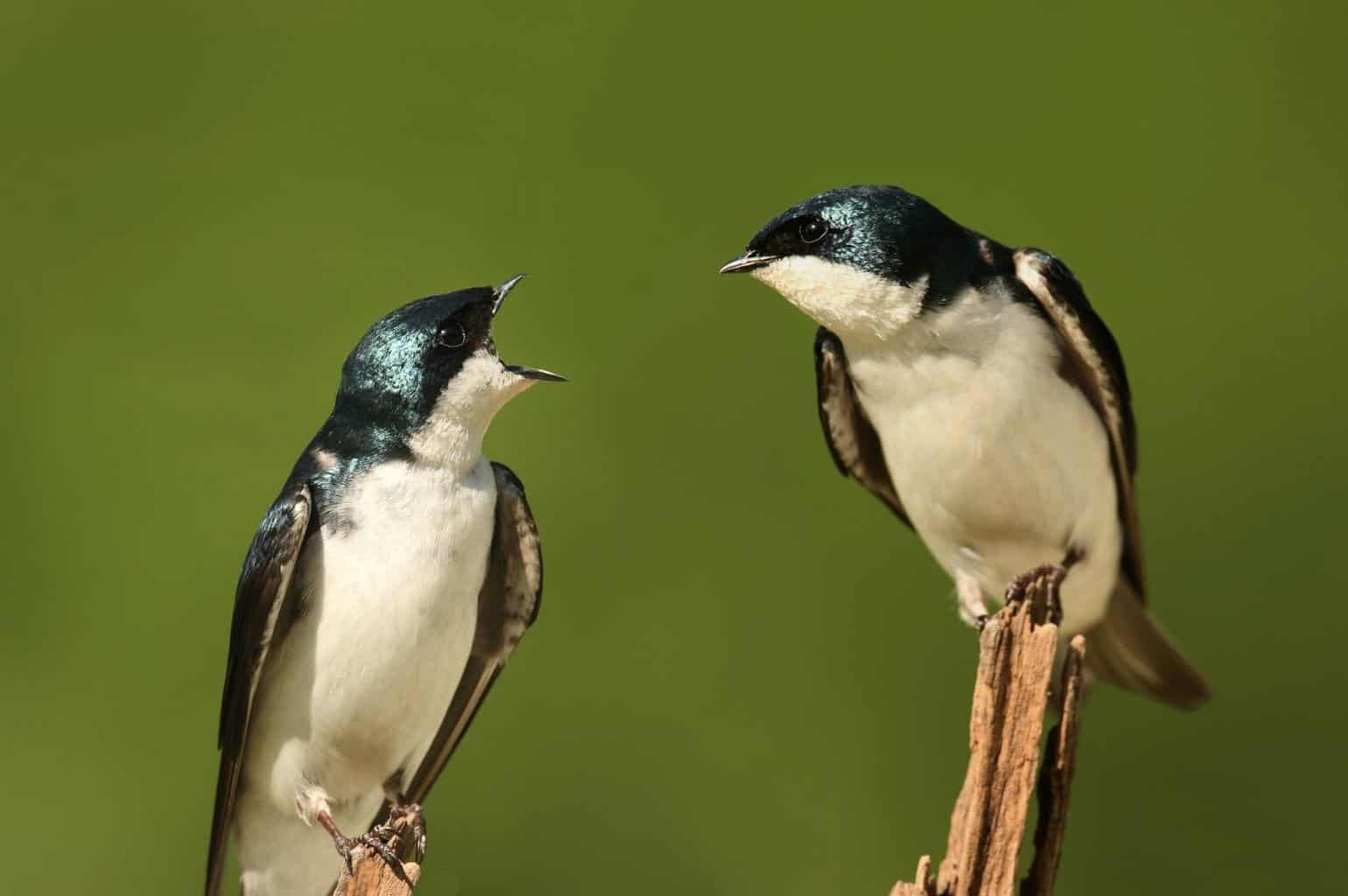
- Scientific Name: Tachycineta bicolor
- Length: 4.7 to 5.5 inches
- Weight: 0.6 to 0.9 ounces
- Wingspan: 11.8 to 13.8 inches
Tree swallows have blue and green plumage. Their wings are black, and they have white underparts. The females can be distinguished by their brown chests.
These birds are migratory and live near marshes, lakes, and meadows. Anywhere with flying insects and close to water is a good habitat for Tree swallows.
They live in artificial nests and often compete with other birds for territory. You’ll find them in birdhouses, dead trees, or even holes in buildings.
The male courts the female by taking her to some nesting sites. The female settles on one, and they start breeding. These birds look for new mates annually.
Blue Jay
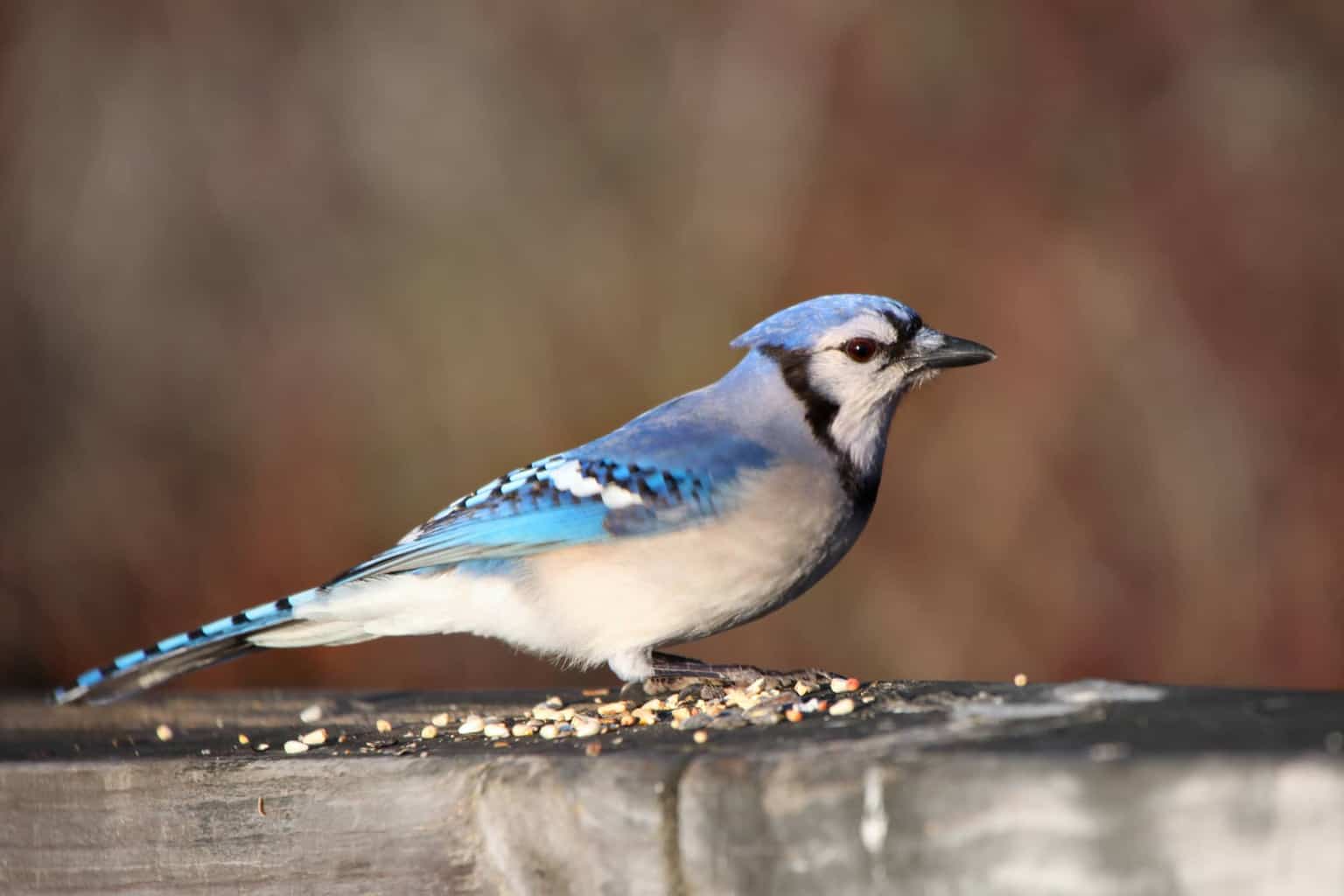
- Scientific Name: Cyanocitta cristata
- Length: 10 to 12 inches
- Weight: 2.5 to 3.5 ounces
- Wingspan: 13 to 17 inches
Blue jays have distinctive blue bodies with white faces. They also have black collars around their necks. They have striking colors with the loudest call you can hear by far. They love singing and copying other birds, especially the Red-shouldered hawk.
They find scrubby forests and suburban gardens inviting habitats. They also inhabit parks and less dense woods, with oak and pine woods being their favorite. Blue jays can be very sneaky. Sometimes, they prefer to steal the nests of other birds than build their own!
Blue jays are primarily omnivorous. Vegetables comprise about 75% of their diet, including acorns, nuts, grains, seeds, and more. They also eat insects like snails, spiders, grasshoppers, and beetles, alongside birds’ eggs and other food sources.
Green Birds in West Virginia
Mexican Violetear
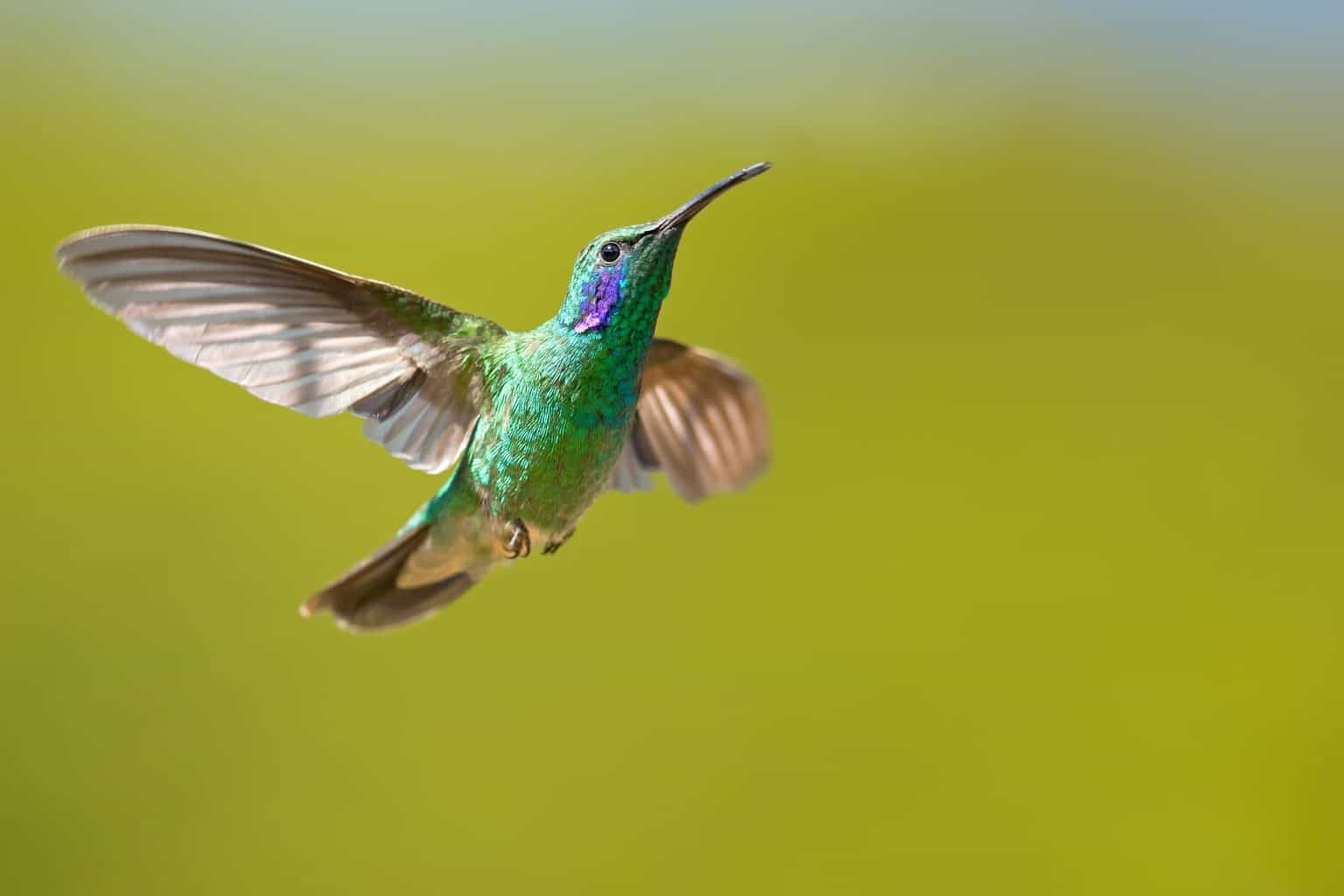
- Scientific Name: Colibri thalassinus
- Length: 3.8 to 4.7 inches
- Weight: 0.17 to 0.20 ounces
- Wingspan: 7 inches
According to hummingbirds’ standards, the Mexican Violetear is a medium-sized bird. Its distinctive glittering green color covers most of its body. It also has shining violet, blue and black colors on its neck and tail.
These birds usually favor less dense forests and secondary woodland. The Mexican Violetear thrives best in subtropical areas containing gardens and scrubs. They also prefer living in more humid, high-altitude areas.
This medium-sized hummingbird consumes nectar as its main source of food. Nevertheless, it supplements its diet with small insects.
Ruby-Throated Hummingbird
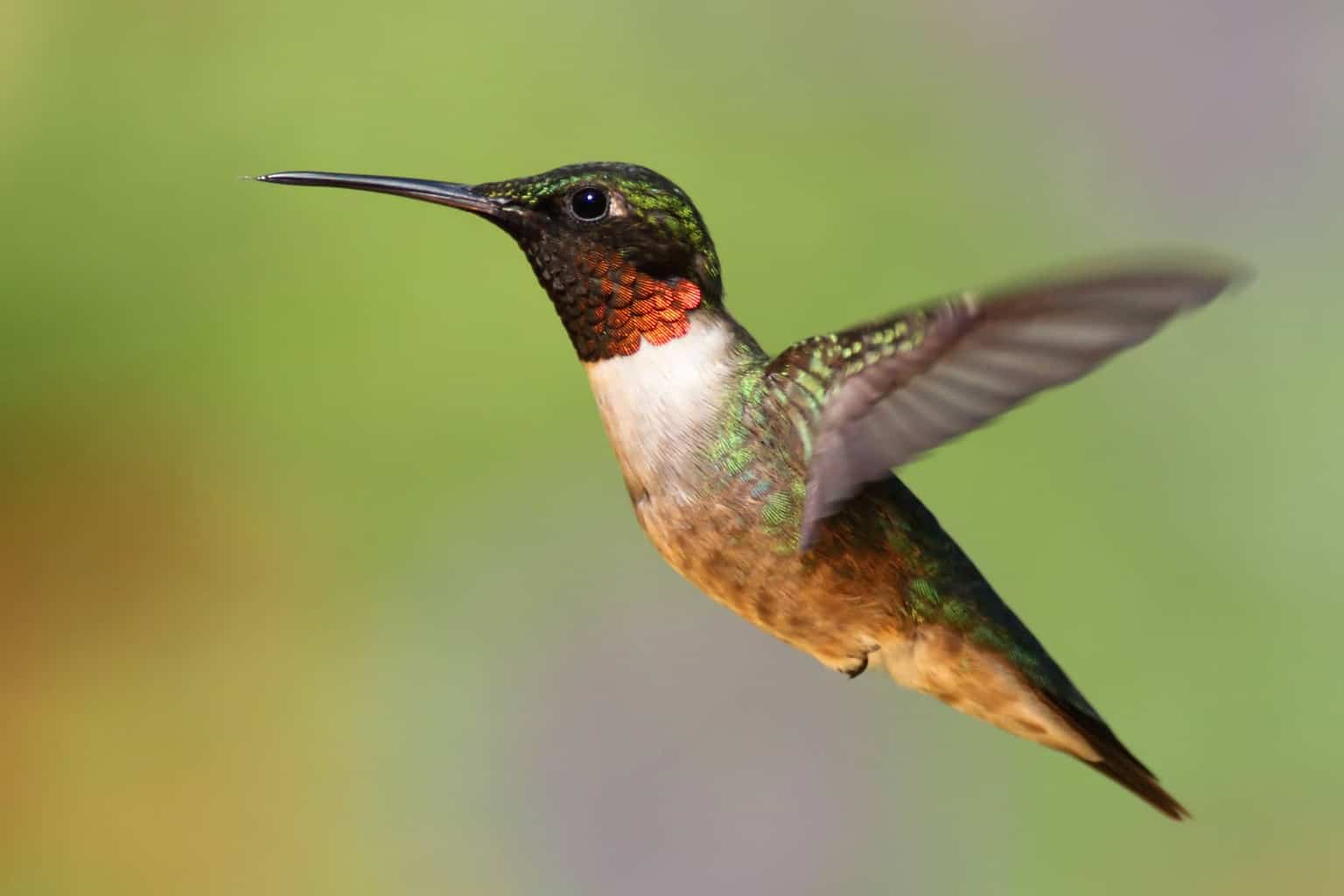
- Scientific Name: Archilochus colubris
- Length: 2.8 to 3.5 inches
- Weight: 0.07 to 0.2 ounces
- Wingspan: 3.1 to 4.3 inches
This hummingbird’s most distinctive feature is its distinguishable ruby-red throat. It’s a very colorful bird with some violet on its back and a black fork-like shape on its tail. It’s generally a green bird, and most of its plumage is metallic green.
These birds are solitary except during the breeding season. They often can be found in well-wooded areas where plentiful flowering plants can be found. They can also be seen in grasslands and city parks.
Unsurprisingly, Ruby-throated hummingbirds have a taste for nectar, especially from all shades of red flowers. They also eat small insects, primarily arthropods, for their high protein and vitamin content.
Check out our comprehensive guide to hummingbirds that you can spot in West Virginia here.
Orange Birds in West Virginia
American Robin

- Scientific Name: Turdus migratorius
- Length: 8 to 11 inches
- Weight: 2.7 to 3 ounces
- Wingspan: 12 to 16 inches
American robins come in a variety of colors, dominated by orange and shades of brown. These birds have white underparts with black spots and a reddish-orange chest. Their heads’ colors also vary from gray to black.
Robins can often be found in well-wooded areas. They also inhabit urban areas and vast farmlands. They prefer to breed near huge trees, as trees provide them with the most nourishment.
As for their diets, American robins rely on insects and fruits. They’re often seen collecting soft-bodied insects, fallen fruits, and berries on the ground. However, they mostly consume more fruit, especially wild fruits, and berries.
Red-Eyed Vireo

- Scientific Name: Vireo olivaceus
- Length: 4.7 to 5.1 in
- Weight: 0.4 to 0.9 oz
- Wingspan: 9.1 to 9.8 in
Red-Eyed Vireos are little singing birds. They have olive-green backs and vary from orange to yellow on the flanks and tails. Those two colors make them hard to see as they blend with the leaves if seen from above and with the sun rays if seen from below.
These little warbler-like birds are American songbirds. They choose high trees to sing all day long in a rhythm often described as question-and-answer notes. It can be said that they inhabit virtually any densely wooded area.
Red-Eyed Vireos have a taste for insects, especially aphids and caterpillars. They also eat other insects and include berries and fruits in their diet. They consume fruits from the tree branches, hovering while feeding. Also, they glean spiders and other arthropods from tree foliage.
Eastern Towhee

- Scientific Name: Pipilo erythrophthalmus
- Length: 6.8 to 9.1 inches
- Weight: 1.1 to 1.9 ounces
- Wingspan: 7.9 to 11.8 inches
The Eastern towhee is considered a large sparrow. It has striking orange sides alongside a dark head, back, and tail. Their unique colors make them unmistakable and eye-catching.
These sparrows commonly spend their time near the ground. They also choose to nest near the ground. They can be found in many habitats, ranging from tall grass open lands to dense forests.
The Eastern towhee primarily feeds on the ground, consuming vegetation. It also likes to eat several types of invertebrates.
The Eastern towhee has a special technique for finding seeds. It scratches the ground with both feet to find deeply buried seeds. Some small animals are also part of this sparrow’s diet, like snakes, lizards, and some small amphibians.
Carolina Wren
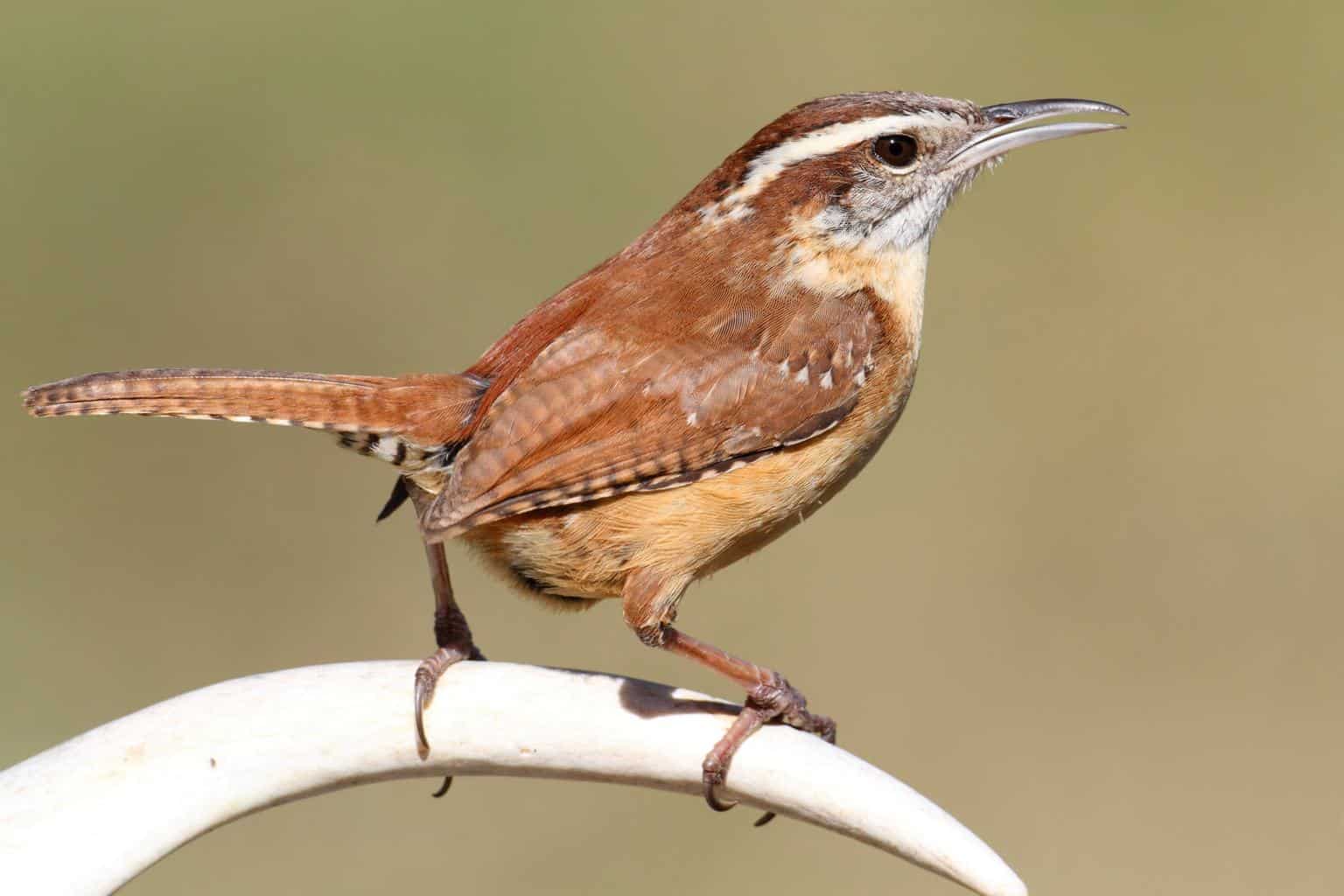
- Scientific Name: Thryothorus ludovicianus
- Length: 4.9 to 5.5 inches
- Weight: 0.63 to 0.81 ounces
- Wingspan: 11 inches
Carolina Wrens are often found in backyards and open woods. You’ll almost always find them in pairs engaging in duets. The male starts singing, and the female backs it up with beautiful “chattering” notes.
Their diet consists of insects. From beetles and crickets to tree bugs and caterpillars, they have quite the appetite for any invertebrate.
These birds are sensitive to cold temperatures. That’s why you might struggle to find them during the winter. They migrate south until spring.
Yellow Birds in West Virginia
Common Yellowthroat
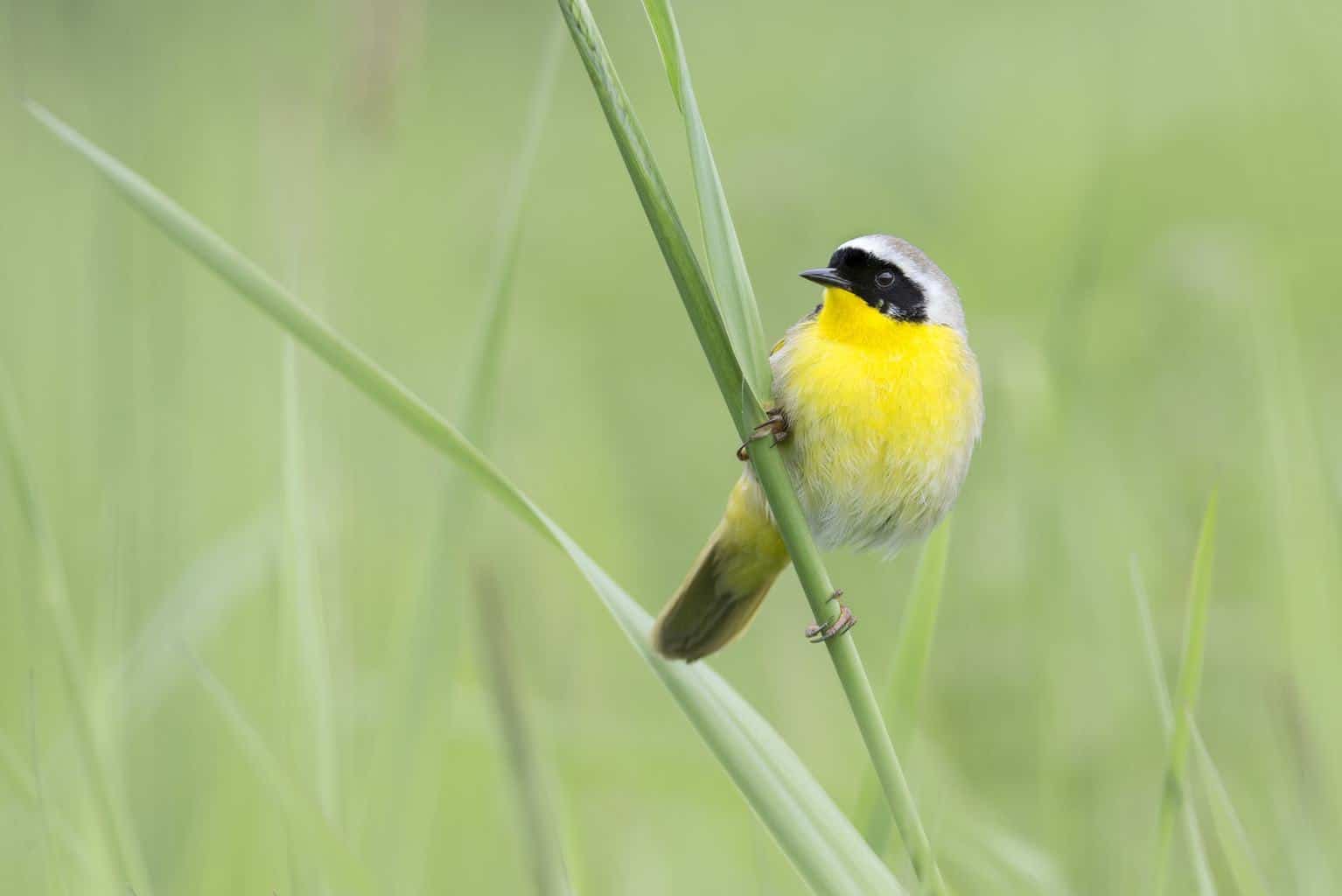
- Scientific Name: Geothlypis trichas
- Length: 4.3 to 5.1 inches
- Weight: 0.3 ounces
- Wingspan: 5.9 to 7.5 inches
These small songbirds have yellow throats and underparts. They have olive tails and backs, with black masks covering their foreheads and eyes, stretching to their necks.
The Yellowthroat is very common in wet areas. It can be found in shrub-steppe areas and marshes. This being said, its favorite nesting location is usually in low vegetation areas.
They principally feed on insects found in dense vegetation. It’s also very common to see them catching flying insects mid-flight.
American Goldfinch
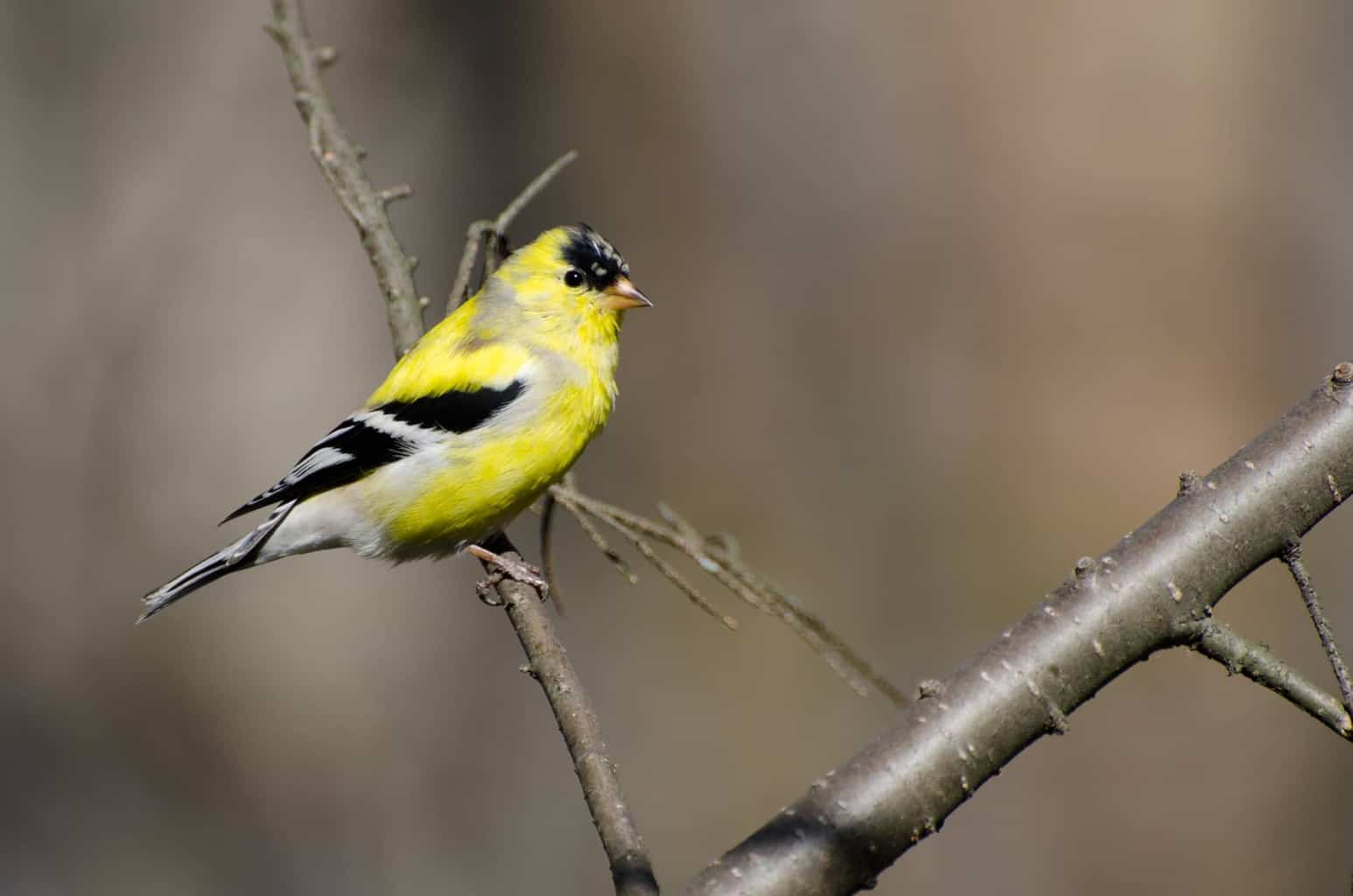
- Scientific Name: Spinus tristis
- Length: 4.2 to 5.4 inches
- Weight: 0.39 to 0.71 ounces
- Wingspan: 7.4 to 8.8 inches
The American goldfinch has a bright lemon-yellow body. The jet-black markings on the wings and head cap give it a distinctive appearance. It also has a white rump which can be observed during flight. It undergoes a molt twice a year, in autumn and spring.
These birds inhabit more weedy and bushy areas and can be seen in meadows, fields, orchards, and even gardens. Yet you can spot one in open woodlands and secondary forests.
The goldfinch is considered granivorous. They principally consume large amounts of seeds. However, they also include insects as a supplement in their high-protein diet.
Cedar Waxwing

- Scientific Name: Bombycilla cedrorum
- Length: 6 to 8 inches
- Weight: 1 ounce
- Wingspan: 12 inches
The Cedar waxwing is a colorful, mid-sized bird boasting shades of gray, brown, and brilliant yellow. This bird’s most distinctive feature is the striking red wax droplet on its wing feather. It also has a jet-black mask stretching from its eyes to the back of its head.
They prefer open woodland, choosing to live in trees at the edge of open forests. Generally, they favor landscapes with spaced trees. Also, they find the sound of running water attractive and mesmerizing, and they drink and bathe regularly.
Cedar waxwings usually favor fruits and berries year-round. They are considered pests as they can cause serious damage to fruit farms because they feed in groups. However, they consume more insects during the breeding season.
Hooded Warbler
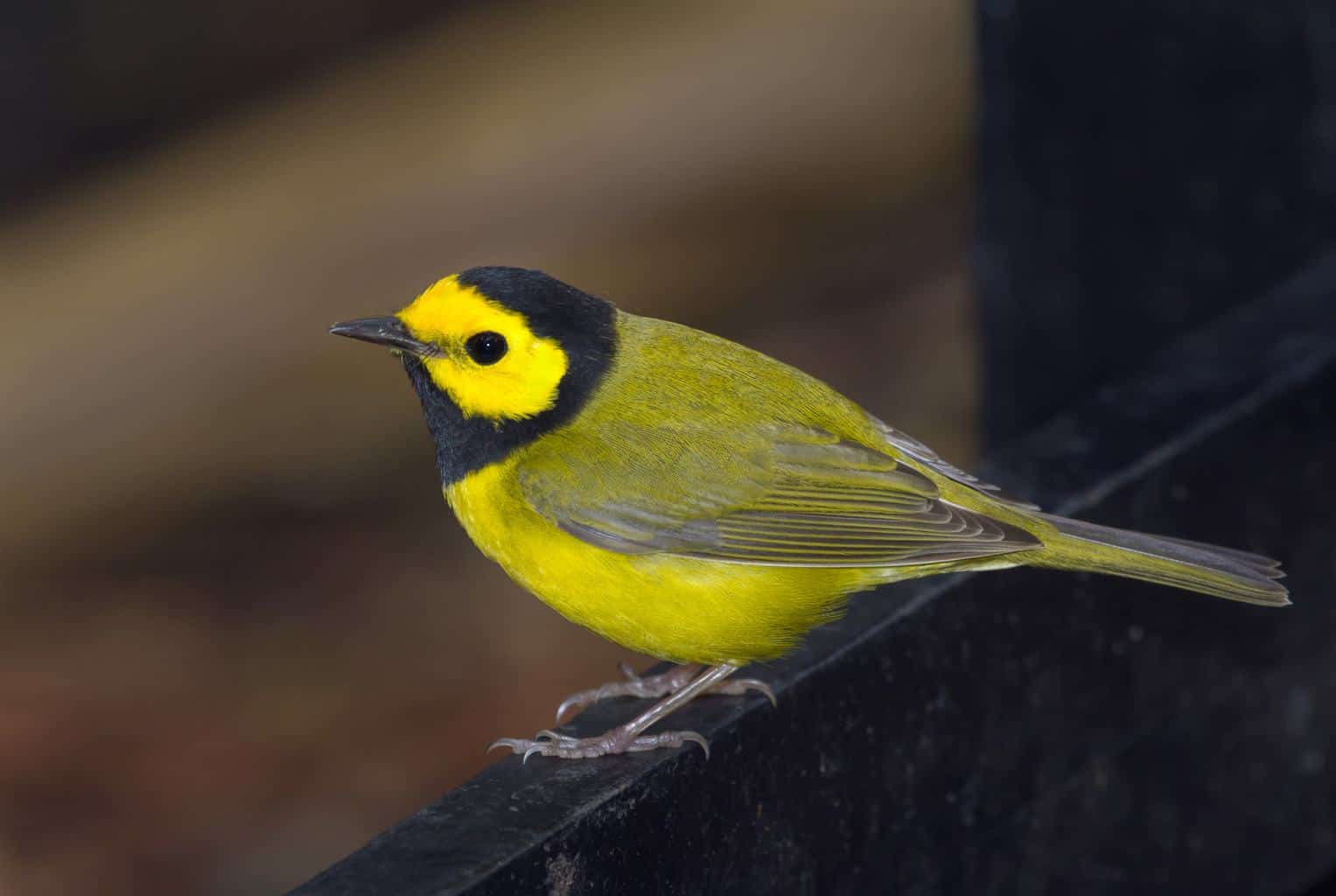
- Scientific Name: Setophaga citrina
- Length: 5.1 inches
- Weight: 0.32 to 0.42 ounces
- Wingspan: 6.9 inches
Hooded warblers have solid green and brown backs with yellow underparts and heads. They have black hoods around their faces, hence the name.
They live in woodlands with dense undergrowth. Hooded warblers are very territorial; males and females defend their territory at all costs.
These mid-sized warblers usually feed on all types of insects found in low vegetation or catch insects during their flights.
Other Birds in West Virginia
Downy Woodpecker
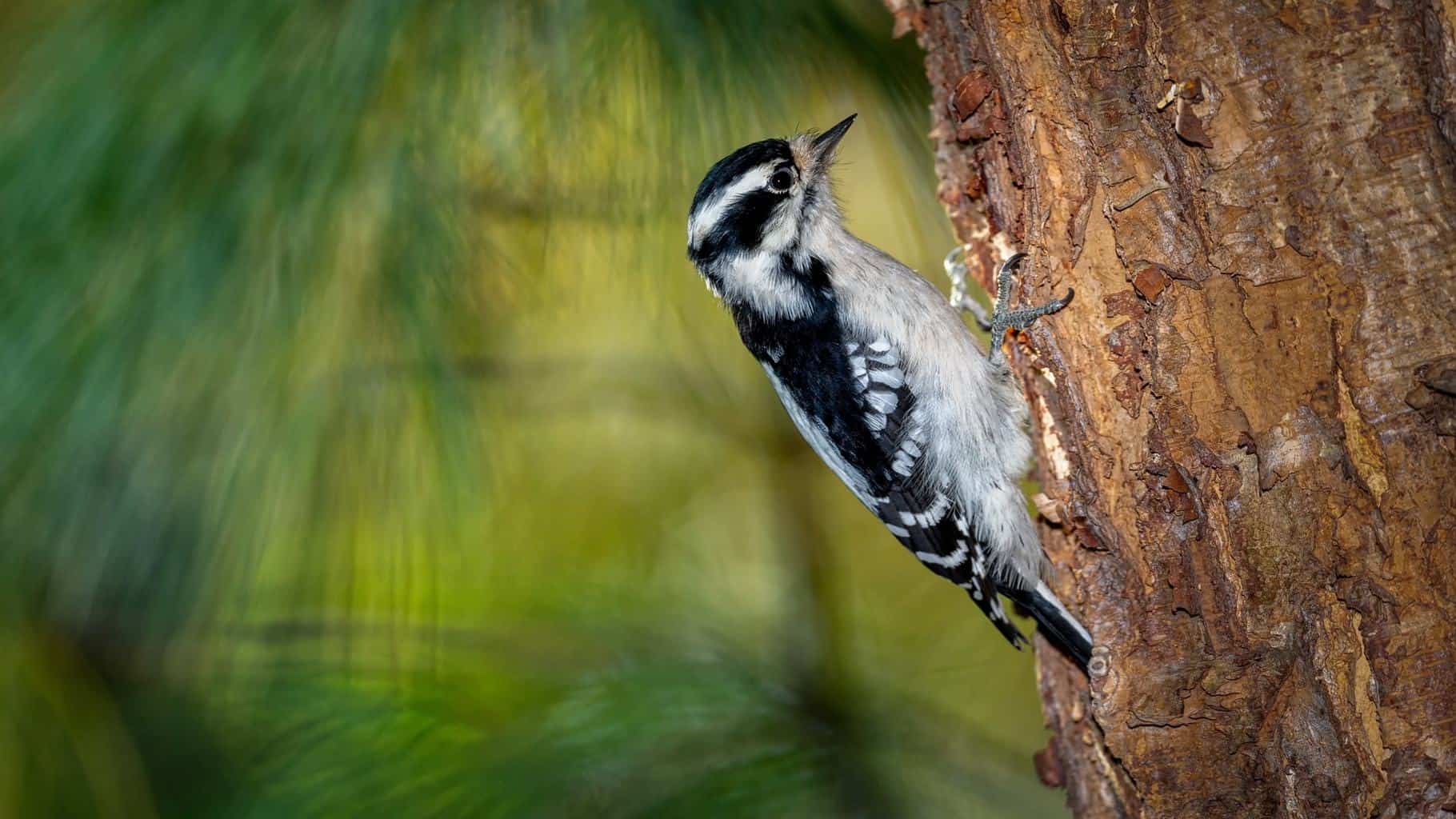
- Scientific Name: Picoides pubescens
- Length: 5.5 to 6.7 inches
- Weight: 0.7 to 1.0 ounces
- Wingspan: 9.8 to 11.8 inches
By far the smallest North American woodpecker species, the Downy woodpecker is seen as an exact copy of the larger Hairy woodpecker in terms of plumage pattern.
It’s mainly white on the back, throat, and belly. Its wings and upperparts are also black, with white streaks on the wings.
Downy woodpeckers live in dense forests and heavily wooded areas. They can also be found in suburban areas wherever there are mature trees. Every pair nests in a dead tree cavity that they excavated.
They prefer insects as their main source of nourishment. However, they also consume berries and seeds.
Eastern Phoebe
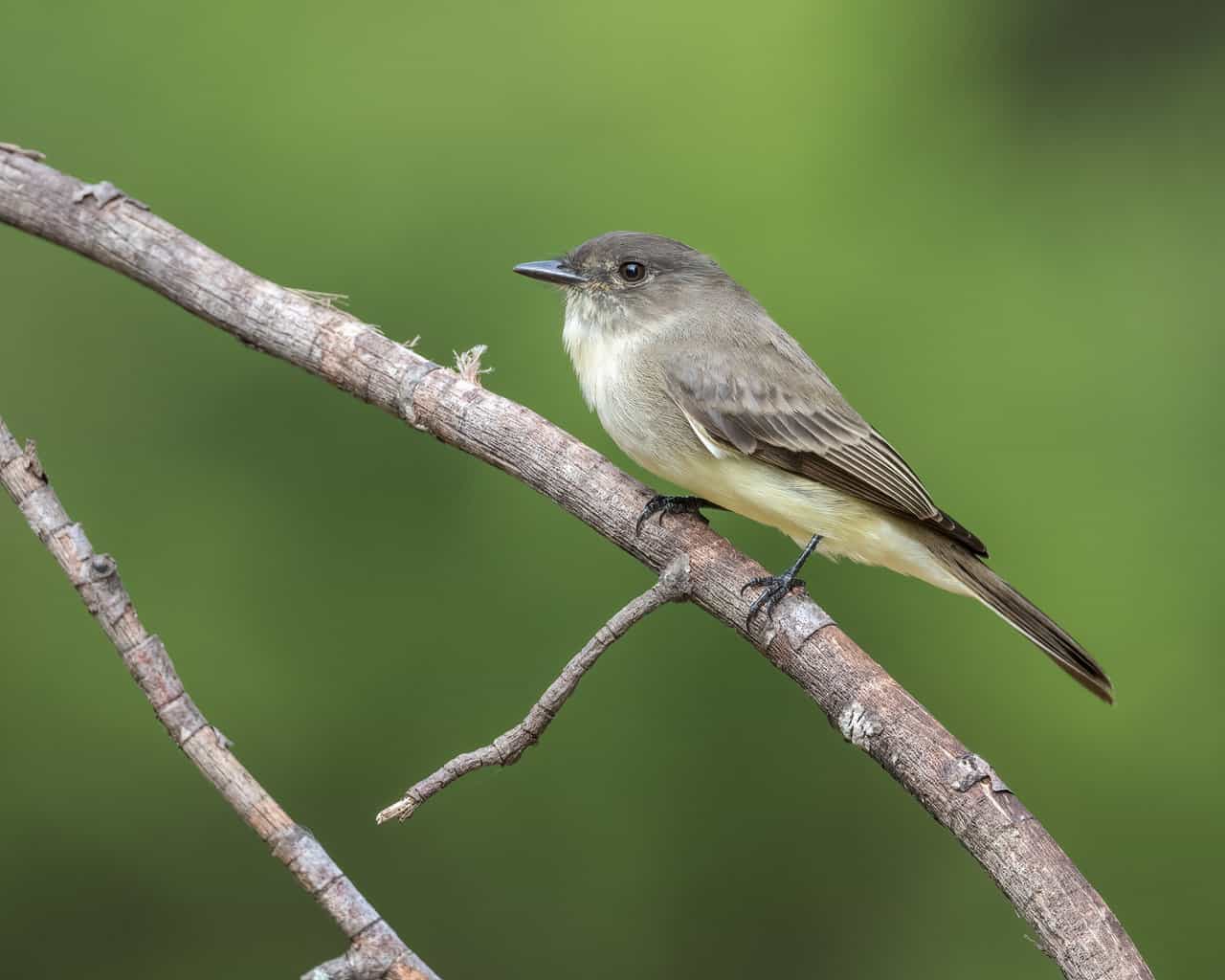
- Scientific Name: Sayornis phoebe
- Length: 5.5 to 6.7 inches
- Weight: 0.6 to 0.7 ounces
- Wingspan: 10.2 to 11 inches
The Eastern phoebe’s most distinctive feature is its notably large head. They tend to puff their small crests when threatened, making their heads look even more out of proportion with their bodies.
Their colors vary from gray to brown and cover most of their body. They also have a little white on their throat, with dirty gray covering the rest of their underparts.
These birds can be found in suburban areas, farmlands, and open woodlands. They also love to be near water.
Eastern phoebes primarily feed on different types of insects year-round. However, they also consume berries and fruits during the cooler season.
Black-Bellied Plover
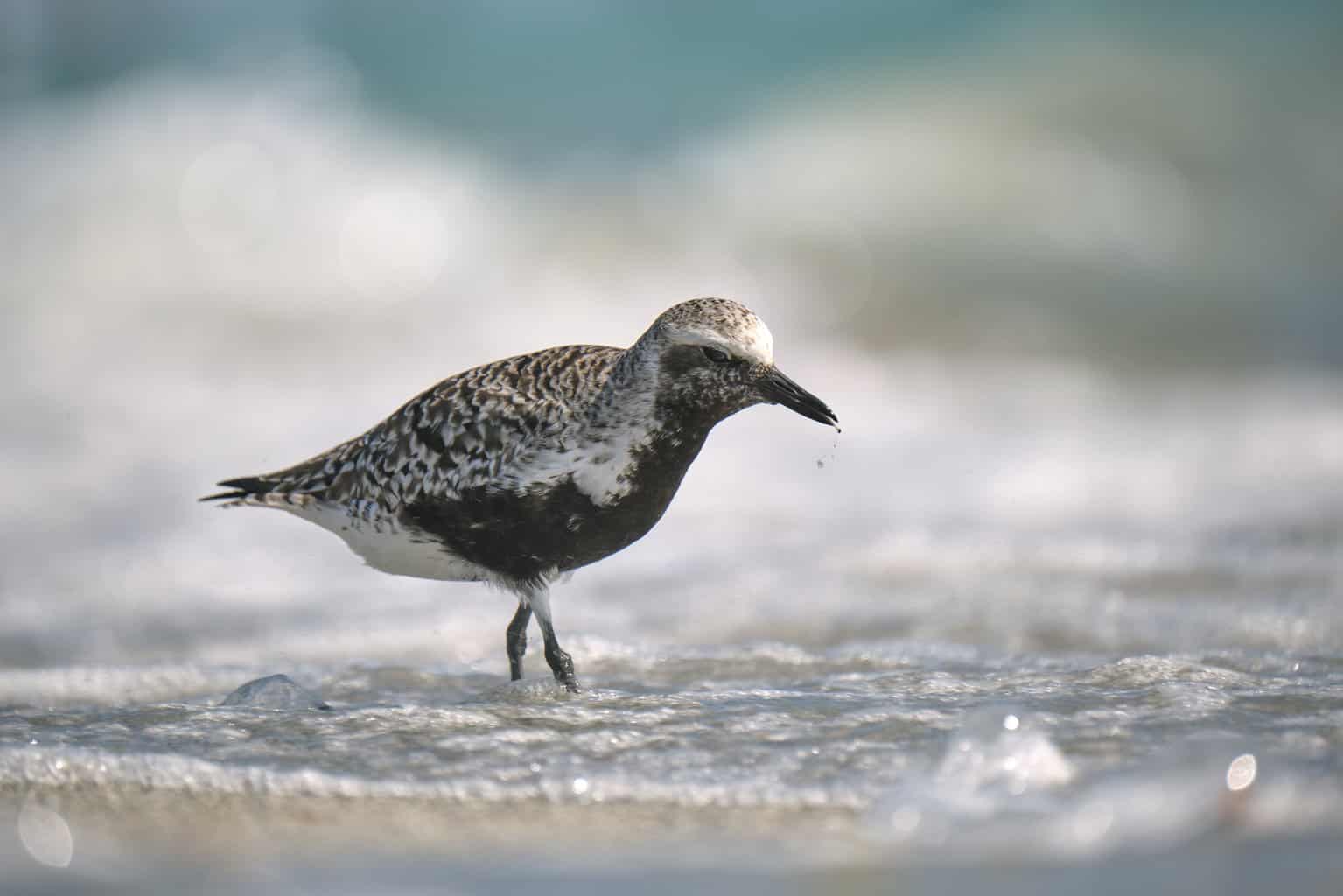
- Scientific Name: Pluvialis squatarola
- Length: 11 to 11.4 inches
- Weight: 6 to 9.7 ounces
- Wingspan: 23.2 to 23.6 inches
Plovers have highly contrasting colors. They have black underparts, necks, and faces with a solid white border. Their backs have black and white spots, and they have white rumps. Their tails are also white with slight black trims.
They favor coastal areas and arctic islands. Plovers prefer to nest on the dry ground of open tundra with a long range of visibility.
These birds usually feed near beaches, consuming insects, small mollusks, and polychaete worms. They prefer to feed alone and away from other birds.
Tufted Titmouse
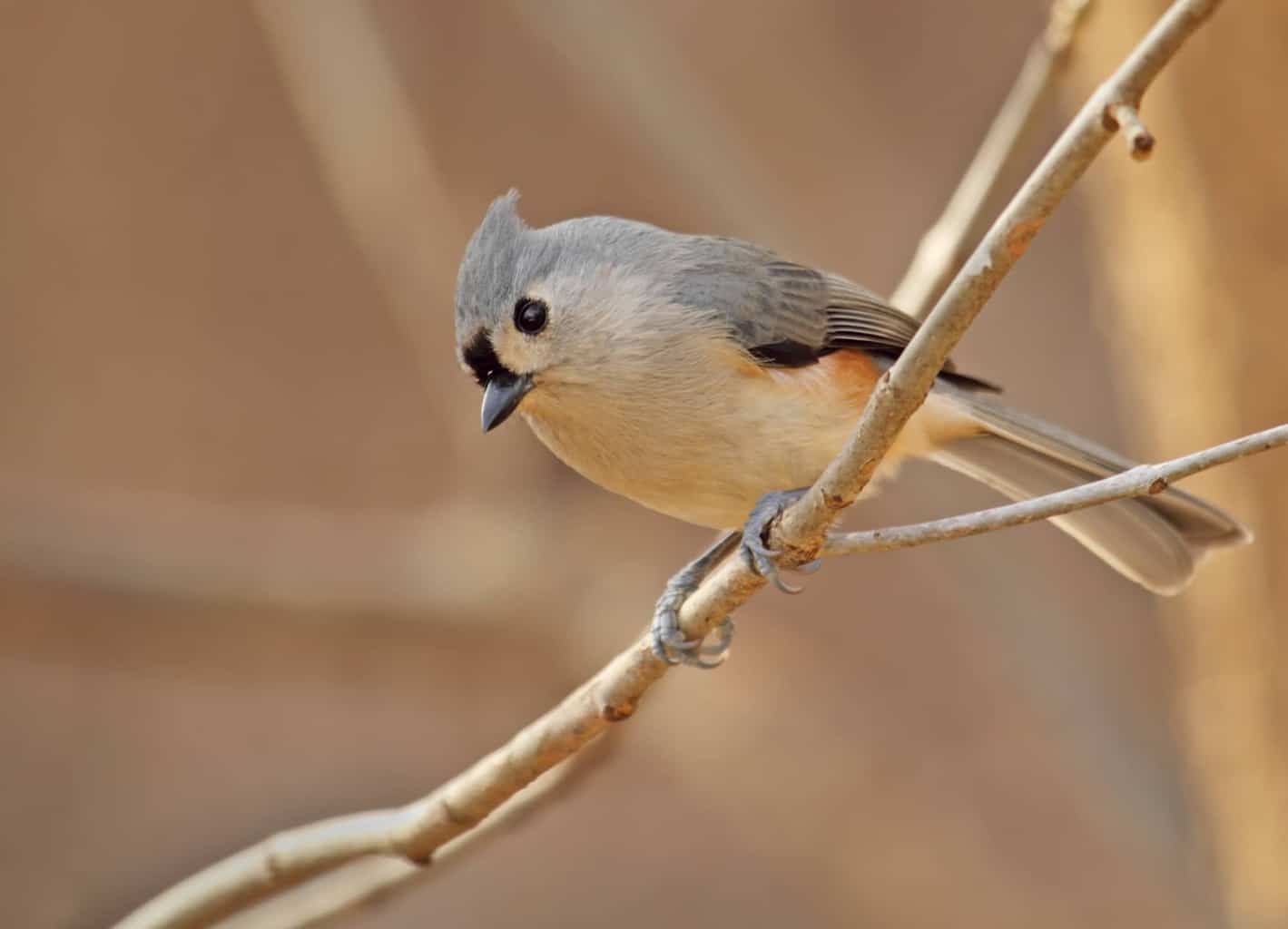
- Scientific Name: Baeolophus bicolor
- Length: 5.5 to 6.3 inches
- Weight: 0.6 to 0.9 ounces
- Wingspan: 7.9 to 10.2 inches
The Tufted Titmouse is an adorable and tame bird most common in the east. They have a distinguishable song that sounds like someone is whistling the name “Peter” repeatedly.
You can find these birds foraging on seeds and insects on branches. Sometimes, they like to hang on the branches upside down.
Carolina Chickadee
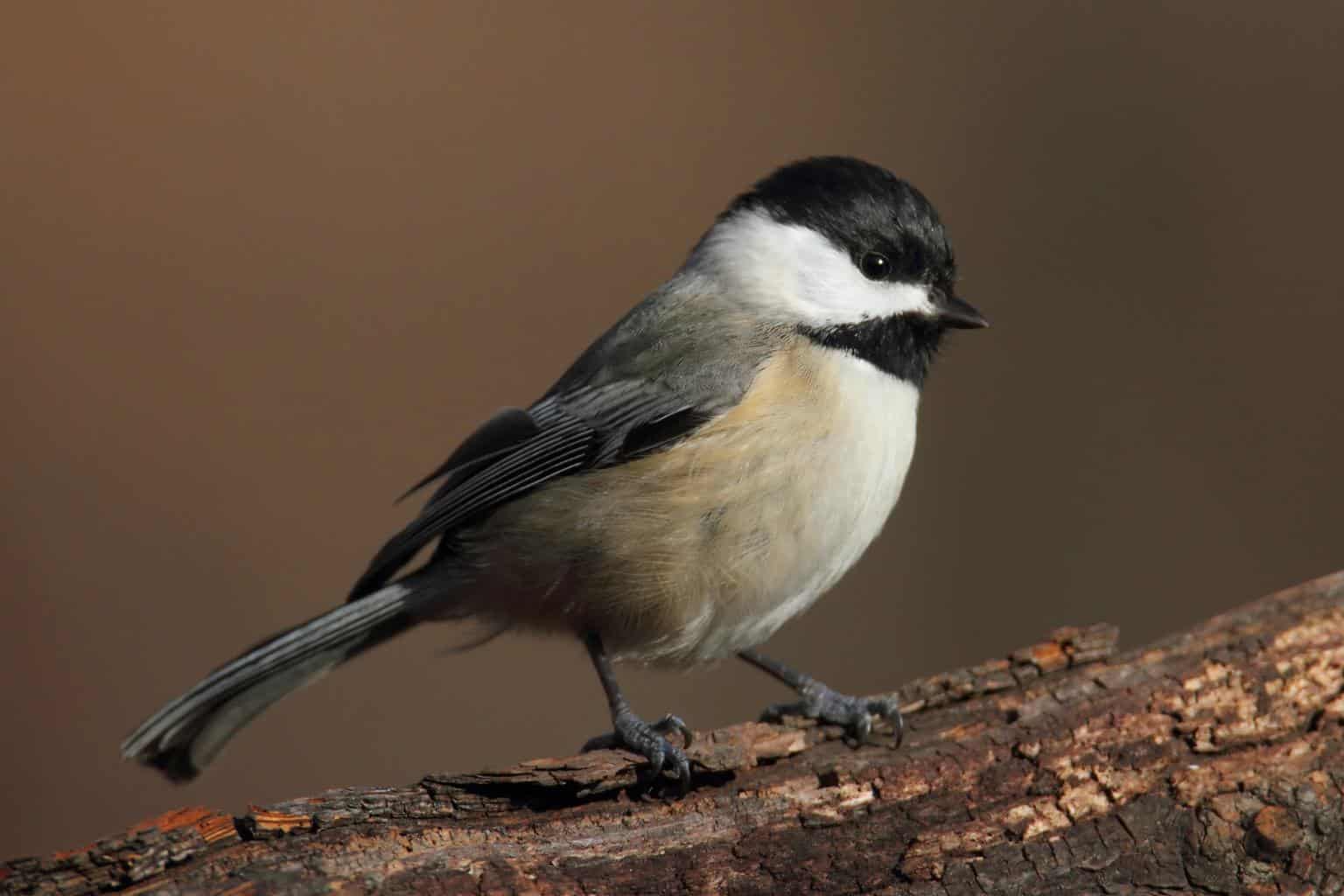
- Scientific Name: Poecile carolinensis
- Length: 3.9 to 4.7 inches
- Weight: 0.3 to 0.4 ounces
- Wingspan: 5.9 to 7.9 inches
Carolina chickadees are commonly found in suburban yards foraging on sunflower seeds. They’re excellent at imitating other birdsongs, which is why they can be really confusing for inexperienced birdwatchers.
Their diets consist primarily of seeds and insects. They like vegetable matter more in the winter to stay full in harsh climates. Like Tufted titmice, they like to hang on the branches upside down, so they can eat whatever’s on the underside.
American Crow
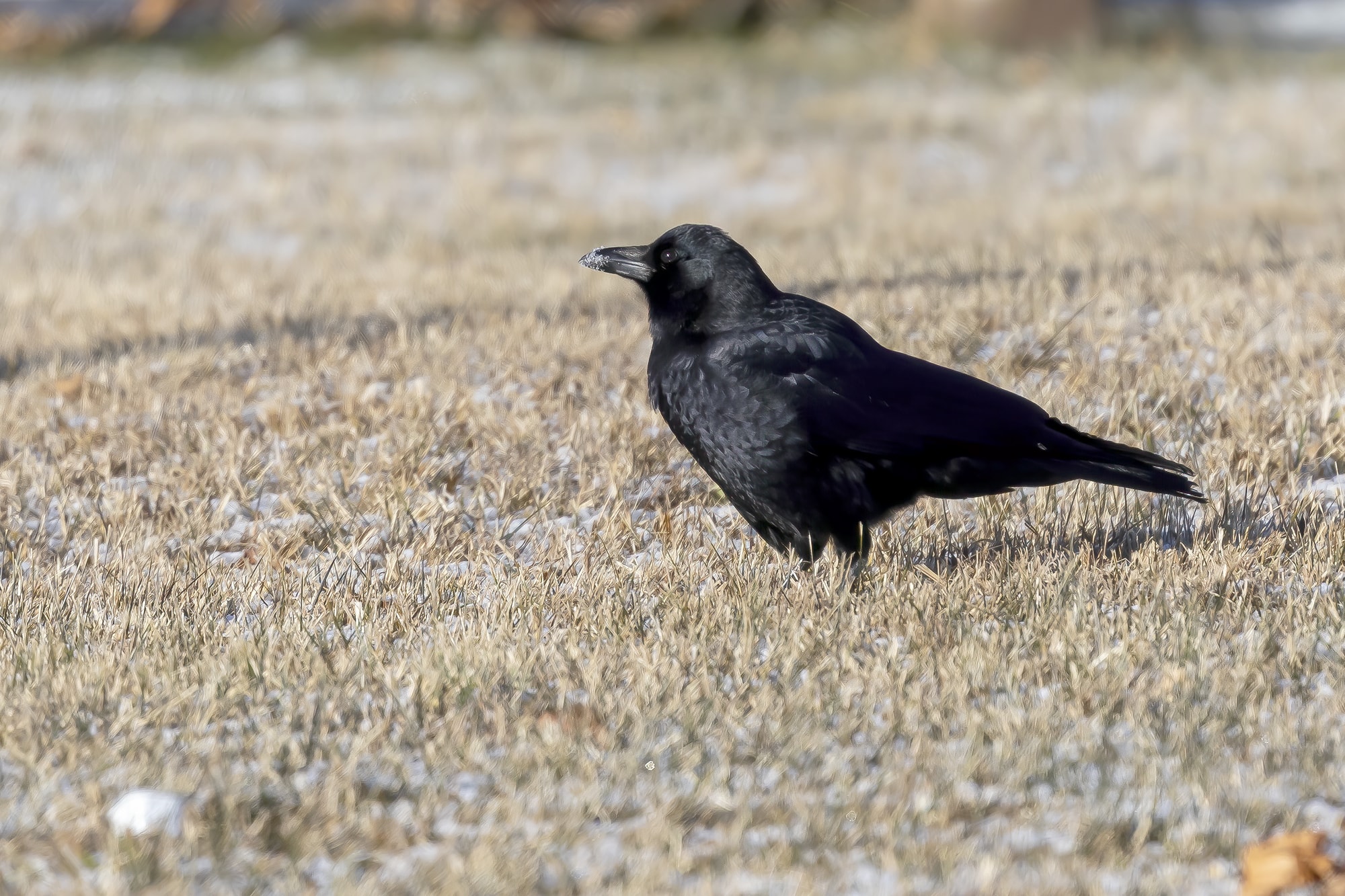
- Scientific Name: Corvus brachyrhynchos
- Length: 15.8 to 20.9 inches
- Weight: 11.2 to 21.9 ounces
- Wingspan: 33.5 to 39.4 inches
Intelligent and brooding, American Crows have one of the most distinctive “caw” sounds across all bird species. You can find crows in a variety of habitats, even with continuous attempts to exterminate them.
Look for crows in woodlands, fields, towns, or even cities. Crows will feed on pretty much anything edible. Insects, fruits, eggs, leftovers in the garbage, you name it!
Wrapping Up
If you’ve followed our article closely, you can now embark on your extensive birdwatching adventure! Make sure you don’t limit yourself to one terrain or season, and carefully observe their habitats before setting out to find them.

